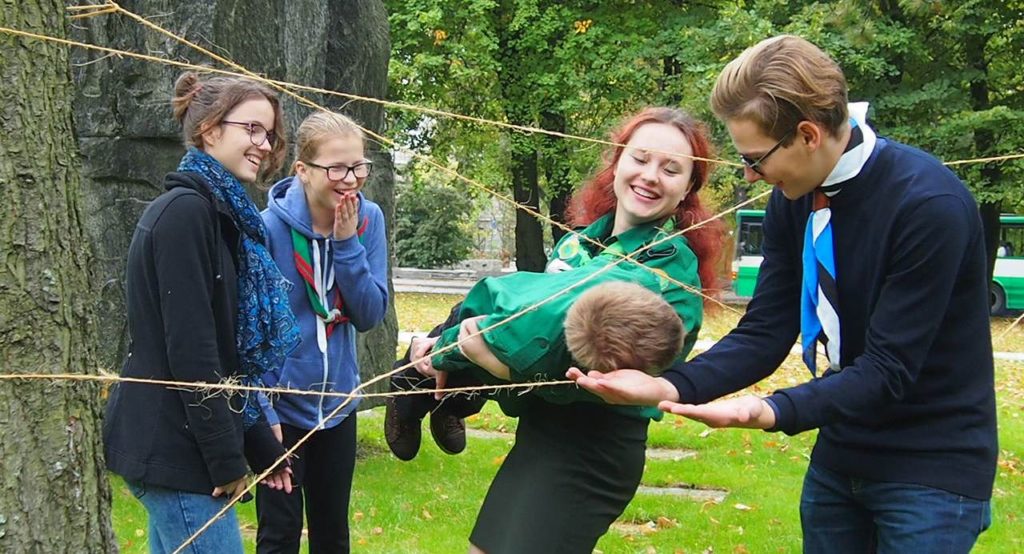Overview of the Youth Program
The ESÜ youth program is based on the following core principles:
- Use of the Scouting method;
- Involvement in the planning process;
- Experience and personal development.
Creating the Program
The aim of Scouting is to raise young people as active and valuable members of society by helping them develop socially, physically, intellectually, emotionally, and morally. These five fields of development are crucial in the youth program, and every activity/adventure must be meaningful and connected to the goals set in each field of development.
The young are fully involved in shaping and implementing their Scouting experience. They devise, plan, and carry out Scout adventures, gain new experiences, skills, and personal development. Through this shared experience, we create a program for the group.
The role of the Scout leader is to provide support and guidance to the youth and keep them on the right path – to be a role model, not a boss. Younger age groups require more assistance and direction, however in older age groups, this becomes more of a mentor-coach type of communication. The Scout leader must be aware of the youth’s needs and understand “where they are” in their development as young people. Scout leaders assist young people in evaluating their activities and highlighting their experiences and development on the Scouting path.
Personal Journey
Each Scout is responsible for their own Scouting experience and participates in shaping and planning their journey. Young people are directed to explore the fields of development therefore allowing them to learn and develop through Scouting.
The program, which the young put together with the help of Scout leaders, proceeds in three specific steps: Assess – plan – carry out.
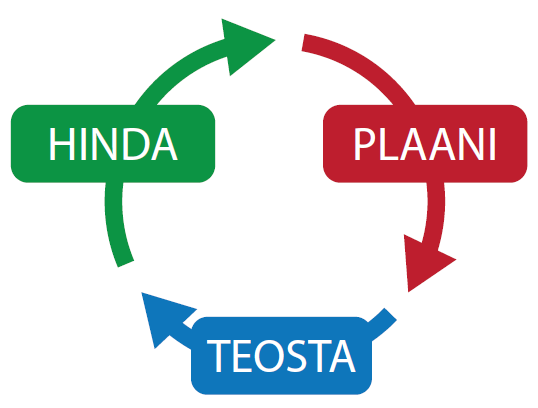
Activities are planned, carried out, and later analyzed. Post-activity analysis is crucial, helping young people learn through activities, bring out and consolidate new knowledge and skills, and take what they have learned to the next adventure. Drawing conclusions is an important part of the young person’s personal journey. It allows them to see their progress and move towards future discoveries and experiences.
Badges
During the program, it is possible to acquire three types of badges:
1. Promise/Oath Badge, which a young person receives upon giving the Cub promise or Scout oath along with the unit neckerchief
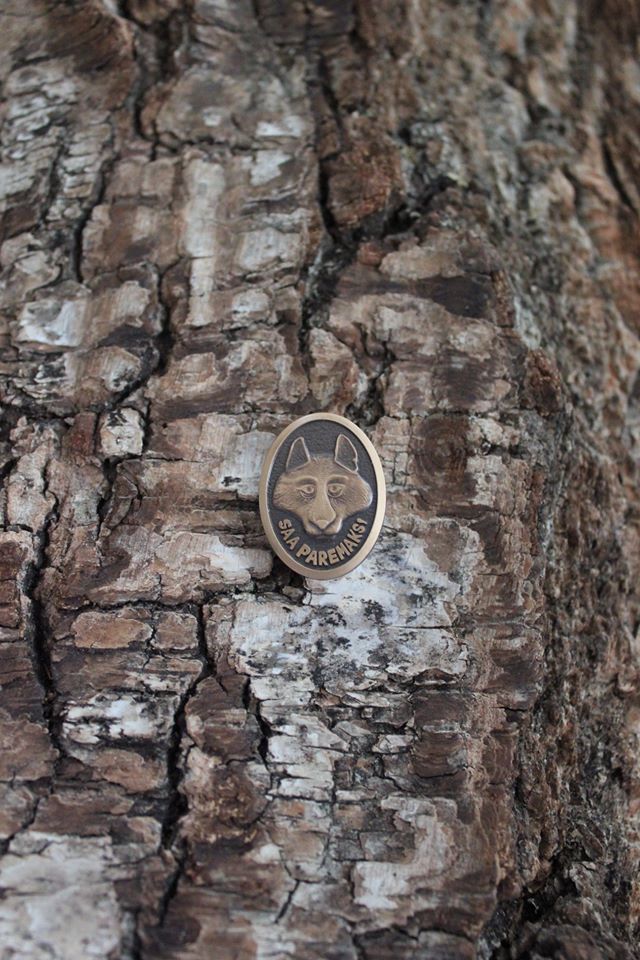
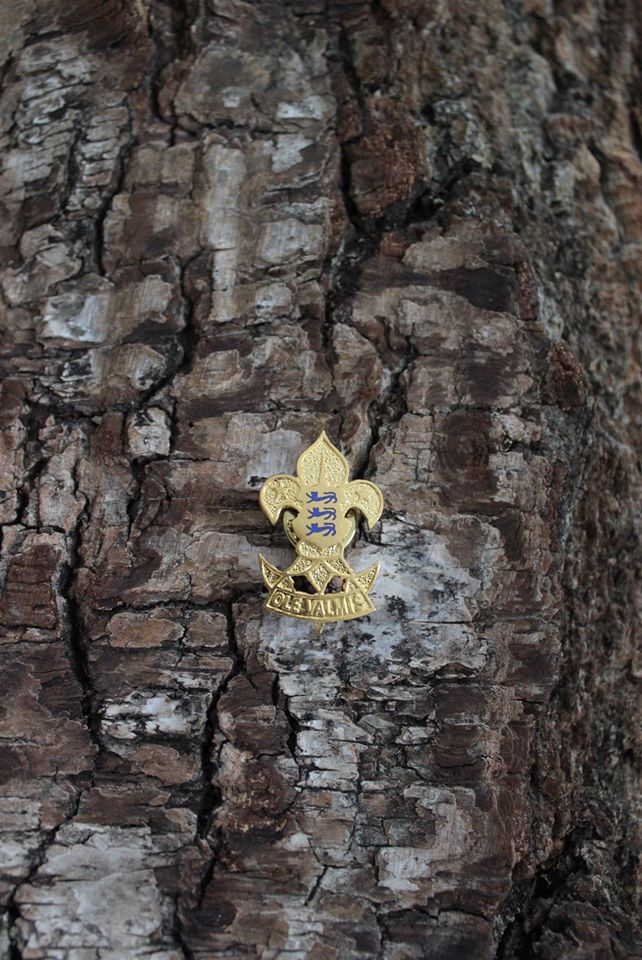

2. Personal Development Badges, which recognize the young person’s progress on their personal journey. These are not based on prescribed tests but rather on the principle of “moving one step forward.” For some, this may be easy, for others more challenging, depending on the young person’s maturity and learning ability.

Cub Level Badges

Scout Level Badges “Tree”
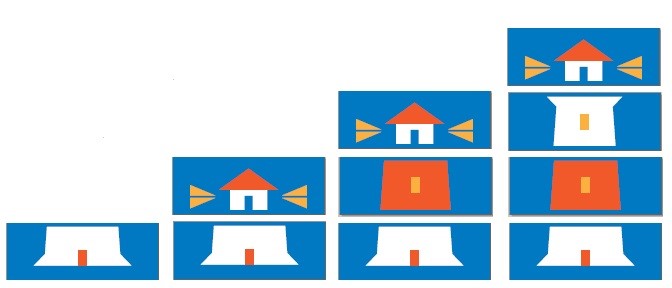
Senior Scout Level Badges “Lighthouse”

Rover Level Badges “Footprint”
3. Scout Skills Badges, which require the young person to acquire specific skills in the respective field. Scout skill requirements are divided into progressive levels (usually 4), ensuring complete mastery of the skill. When reaching the next level, the previous level badge is replaced. Scout skill areas include first aid, hiking, knot tying, etc.
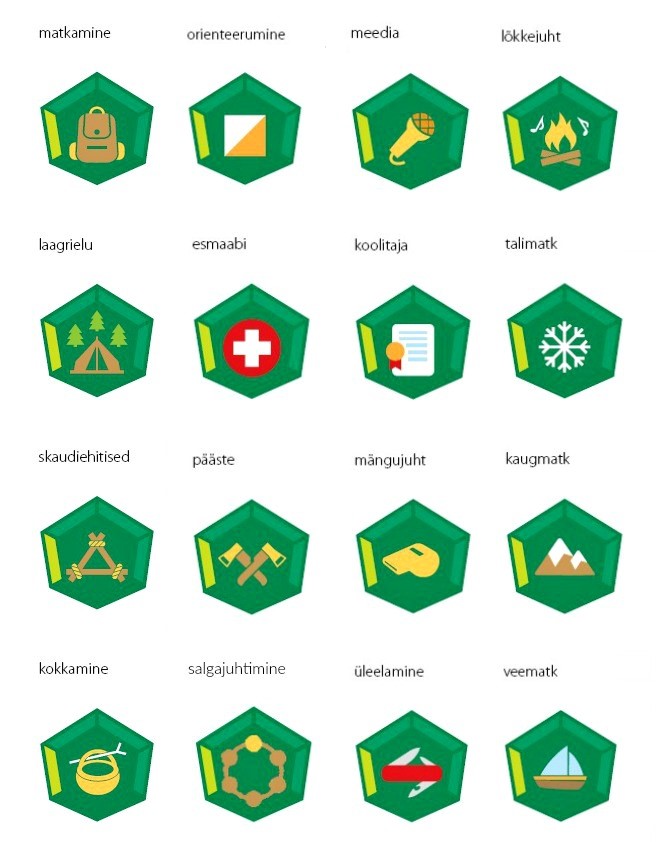
Skaudioskuste märgid
Scouting Method
Through the Scouting method, the program is brought to the youth. The developer of the Scouting method is the founder of Scouting, Robert Baden-Powell, and it serves as the foundation of all Scouting activities.
The Scouting method consists of eight components:
1. Cooperation of young people and adults – the trusted relationship between adults and young people and the growing responsibility of the young.
2. Promise and Scout Laws – commitment to values.
3. Activities in nature – a wide range of engaging, developmental, challenging, and enjoyable activities and adventures both indoors and outdoors, in the forest, and in the city.
4. Learning through action – by getting “hands-on,” learning sticks and the activity becomes “one’s own.”
5. Squad System – in a small group supporting each other, one is braver and more comfortable.
6. Personal development – a recognition system that encourages development and participation.
7. Symbolic framework – names, stories, words, badges that bind and create a sense of belonging.
8. Leadership experience and responsibility – opportunities to lead and take responsibility.
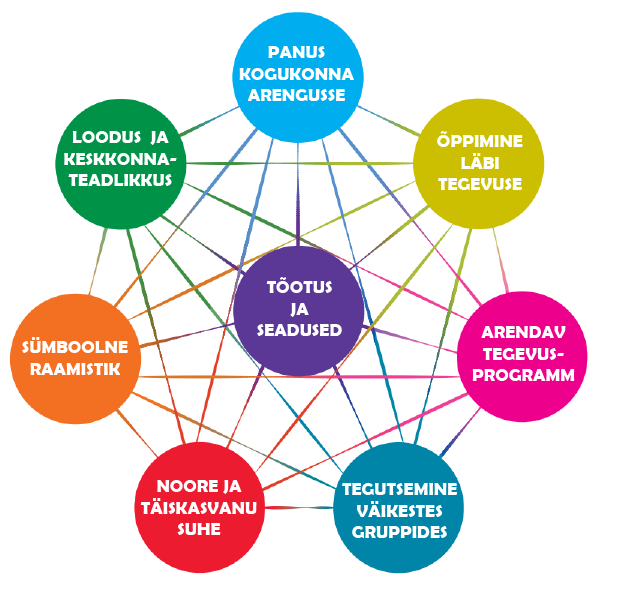
Cooperation of the Young and Adults
The role of adults is to guide and support the young person’s development and provide a safe environment for the young people to act. Adults and youth in Scouting act together on equal terms, sharing the same ideals and commitment, following the Scout promise and laws. They are partners working towards a common goal: the full development of each young person.
For this partnership to work, mutual listening and respect are necessary. Adults help young people learn by listening to them, being ready to talk to them, valuing their participation, instilling confidence, encouraging, and creating a safe environment for them to experiment and explore. Adults help young people achieve what they have undertaken, develop self-confidence, find their limits, and move forward in life.
Young people need support points in their lives, including adults with whom they can talk freely. Adults should ensure that all activities and events are evaluated, and new knowledge, skills, and qualities are clearly defined.
The role of the Scout leader through the various age groups of the youth program diminishes gradually. While in the Cub age group, the leader needs to do preparatory work, organizing, and taking responsibility, as the age group advances, the role of the adult is more to be an example and mentor rather than a leader.
At the same time, it is always the Scout leader’s task to ensure that the activities of young people are safe and connected to the goals of the youth program.
“The success in training the boy depends largely on the Scoutmaster’s personal example.” /B-P/
Oath and Scout Laws
Scouting is a way of life based on the Scout promise and Scout laws (Cub laws) creating a framework of values. Implementing the Scout laws in everyday life gives the Scout a practical opportunity to understand Scouting values. The Scout promise is each individual’s personal commitment to uphold these values. The promise is made in front of fellow members in the first few months after joining Scouting.
By making the Scout promise, the young person makes a conscious and voluntary decision to strive to fulfill the Scout laws. The fact that the promise is made in the presence of peers not only makes the promise public but also symbolizes a certain social obligation to peers.
“The Scout Law is the foundation on which the whole of scout training rests.” “It invites the young person to make commitment concerning his/her own personal development.” /B-P/
Activities in Nature
If possible, Scouting activities take place in nature. Through this, we teach young people to get to know and respect nature and live in an environmentally friendly way. Nature offers us an endless number of activity places, activities, and resources. Hiking and camping are among the most characteristic activities of Scouting.
Being in the wilderness with the troop is a team experience. Managing everyday life together (choosing the route, cooking, choosing the campsite) away from modern comforts creates a mini-community within the troop, where working provides invaluable experiences for life in the “real” society. In a deeper sense, the powerful nature with all its wonders is the best place to contemplate oneself, the world, and one’s place in that world.
“God has given us a world to live in that is full of beauties and wonders and He has given us not only eyes to see them, but mind to understand them, if we only have the sense to look at them in that light.” /B-P/
Learning through Action
Scouting is not about lectures or exams. To learn something new, an activity related to that topic is undertaken and started from scratch (except for topics requiring mastery of safety techniques). Young people learn from each other and with others. The knowledge, attitudes, skills, and attributes learned during the activity are discussed in the summary phase. It is much easier for the young person to understand what is being told to them if they can relate it to their previous experience.
In this context, “activity” is not limited to manual skills or factual knowledge. It also includes responsibility, leadership skills, interpersonal relationships, planning skills, etc. Games also play a significant role in Scouting because every game we play has its own purpose, and games help us learn.
Squad system
Actions are taken in small groups under the guidance of an adult. In small squads (5-9 young people) teamwork, leadership skills, and responsibility are developed, which is the basis for the development of citizen courage. At the same time, a sense of belonging, willingness to cooperate, the ability to plan one’s own activities, and consider others’ interests are deepened.
Personal Development
The Scouting youth program is progressive – different by age group and depending on age and level of development, it supports and guides the young person’s development. Significant attention is paid to each individual’s development. By acting with others, not only a sense of belonging is deepened, but also self-control, self-confidence, and self-respect. Young people also learn to serve others and society and notice their fellow human beings. With individuality in mind, young people’s initiatives are applied as much as possible.
Symbolic Framework
In Scouting’s symbolic framework, at its inception, nature was the basis of Scouting, and the aim was to learn how to manage in the forest. Today, the boundaries of action have expanded considerably, and being a Scout means both coping with nature and creative thinking, enthusiasm, challenge to oneself, and the ability to play an active role in society. Symbolism also plays an important role in Scouting – Scout badges and uniform, which help motivate young people to develop themselves and ensure equality among young people.
Leadership Experience and Responsibility
Scouting offers young people ideal opportunities to take responsibility. Whether through designated positions (patrol leader) or responsibility for cooking dinner on a hike or leading a game, as the program progresses and between age groups, the level of responsibility and leadership tasks should increase. With the correct implementation of the Scouting method, each patrol member always has something during each activity that is their responsibility.
